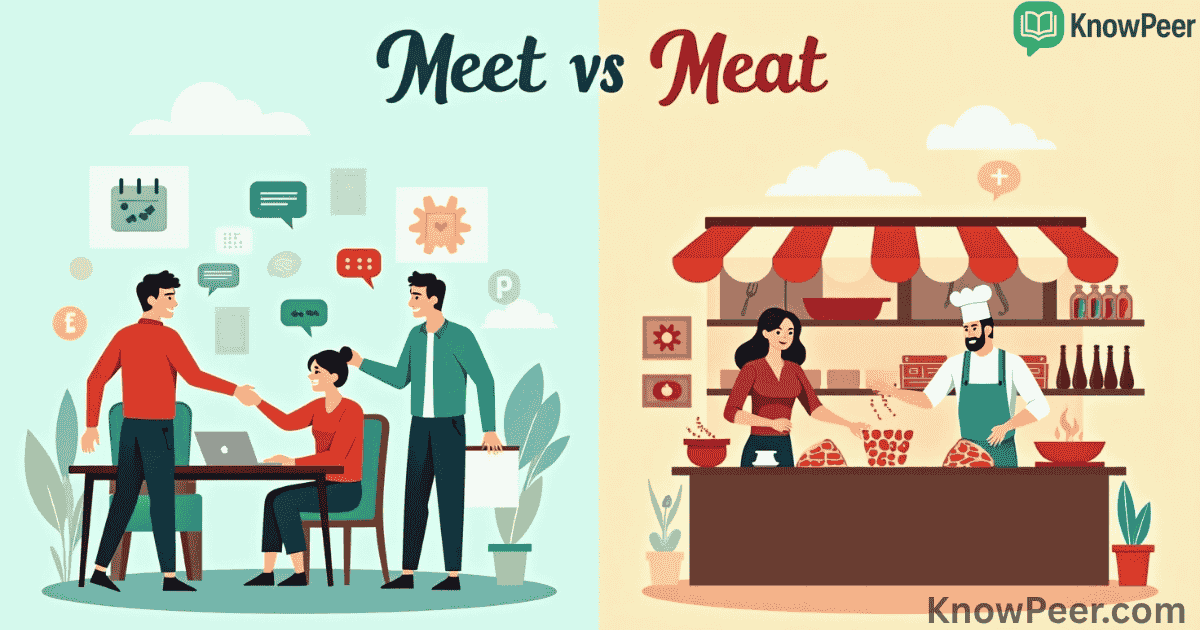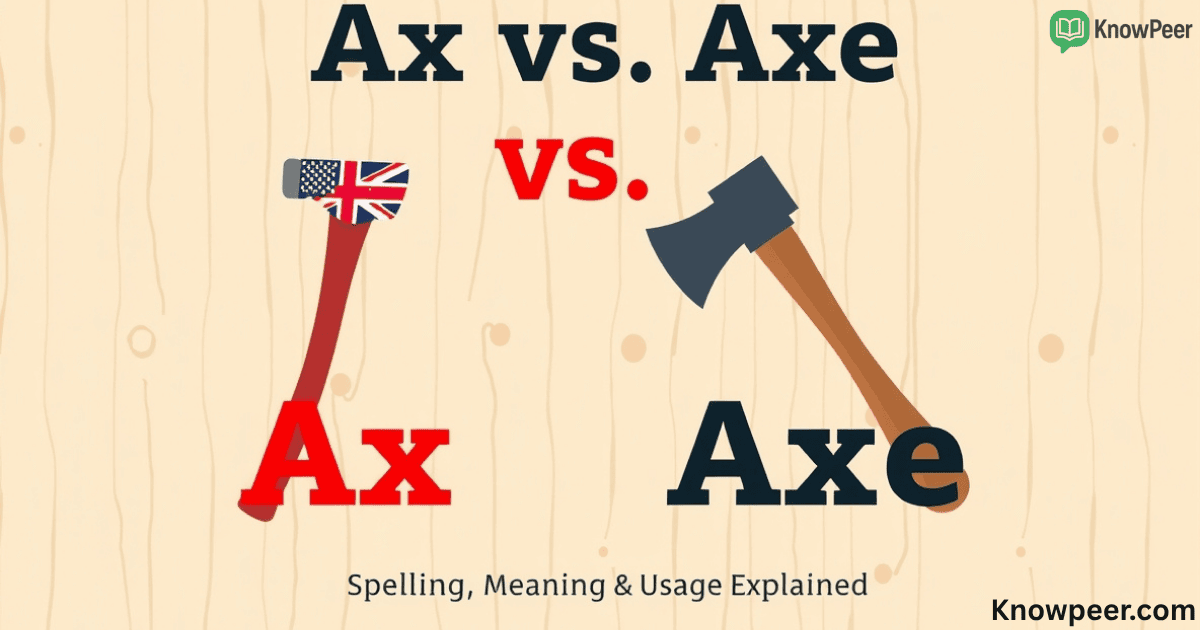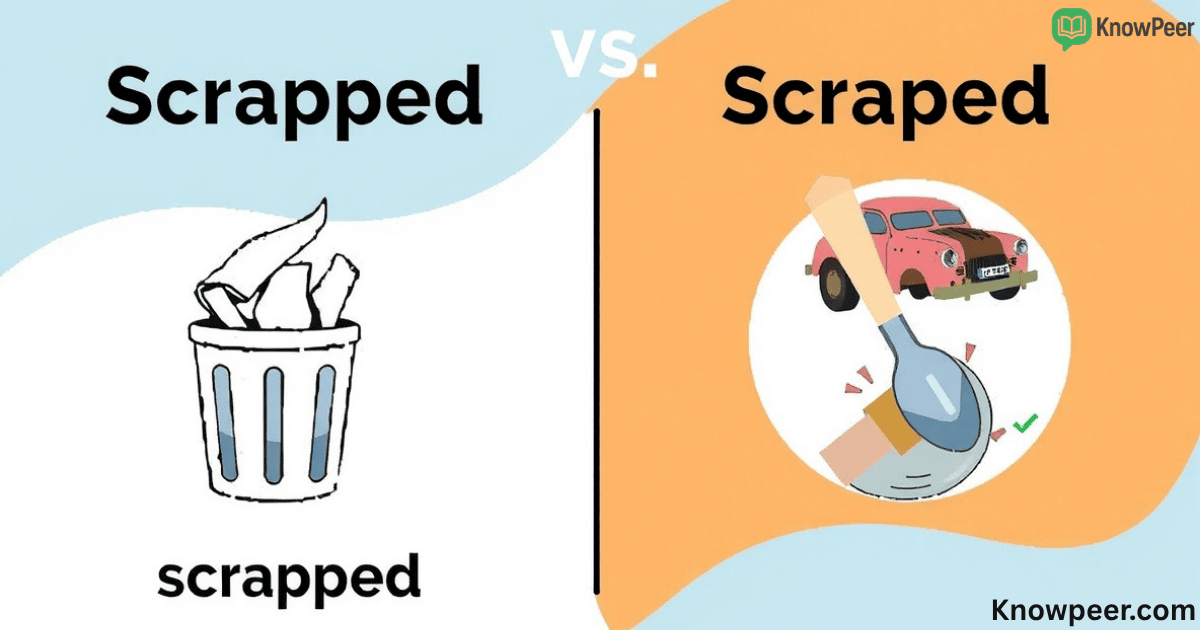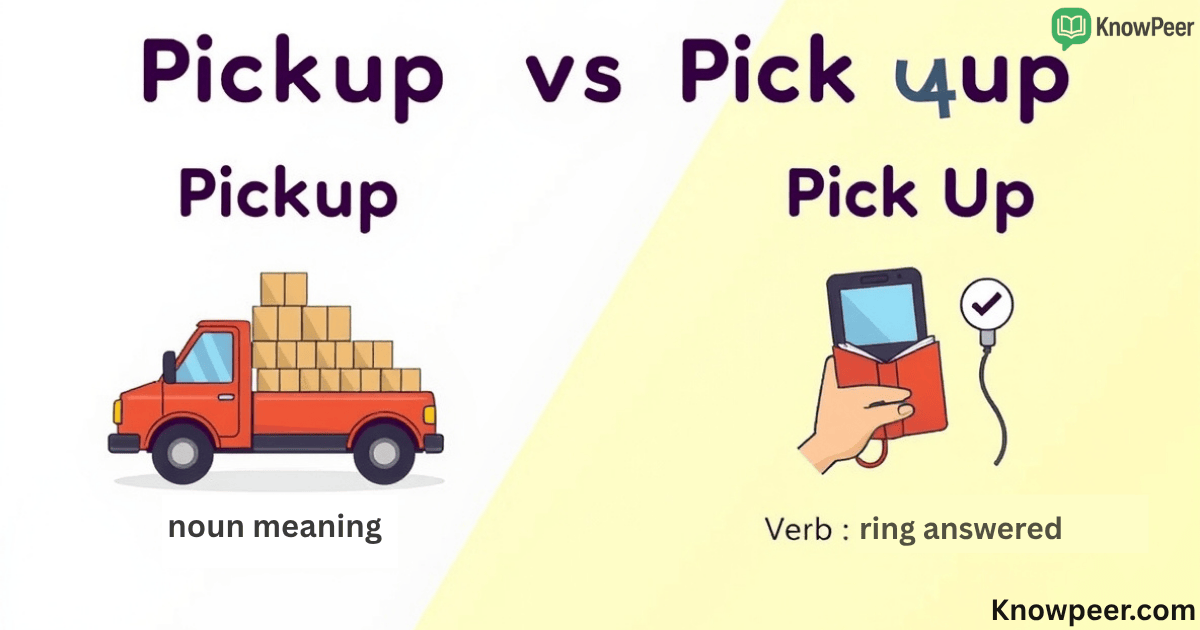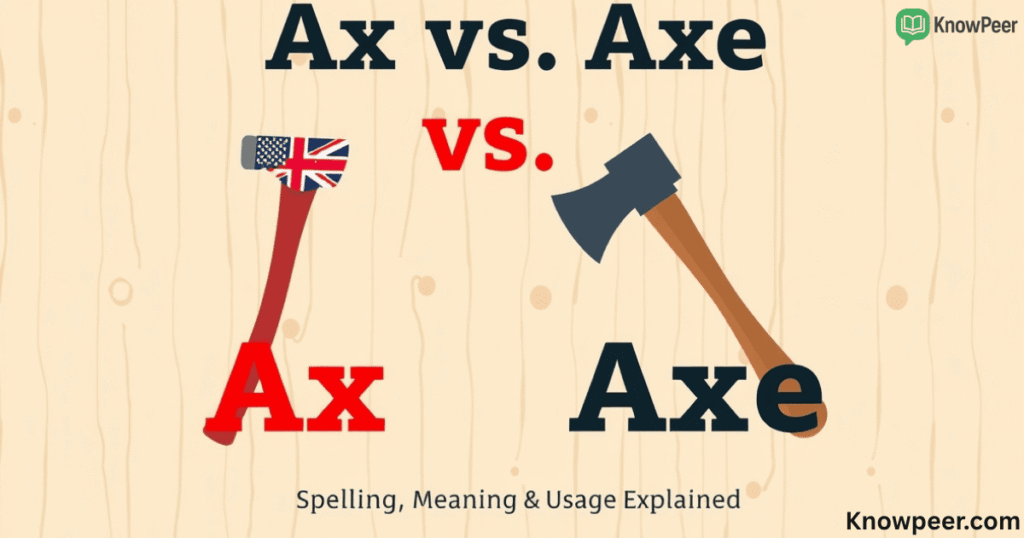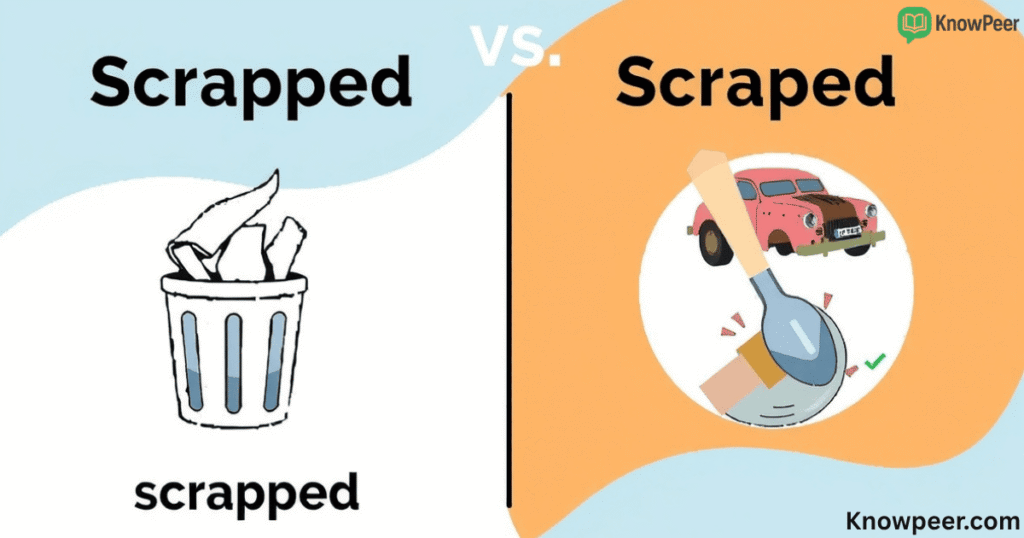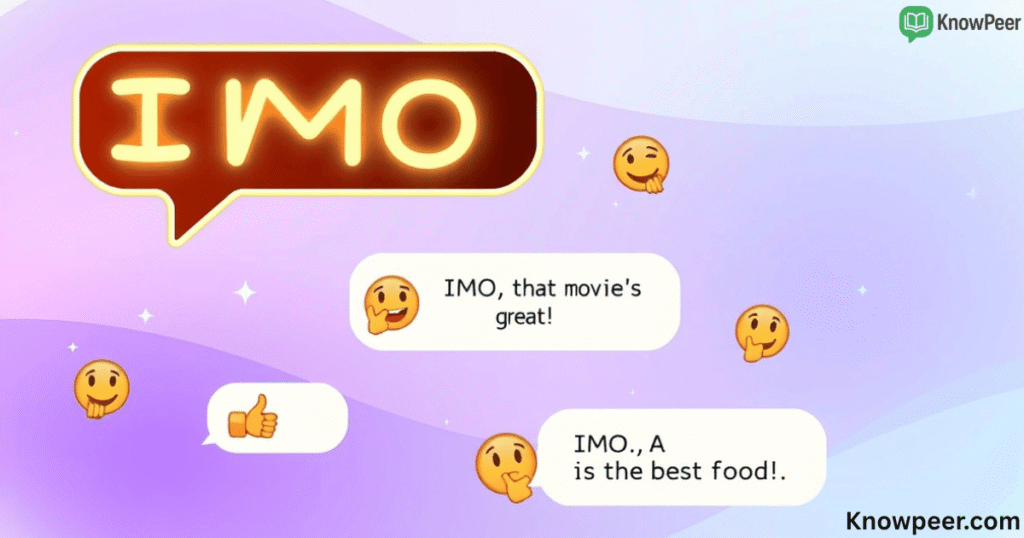What’s the Real Difference Between Meet and Meat?
The words “meet” and “meat” may sound the same, but they mean completely different things. This causes a lot of confusion, especially for people learning English Meet vs Meat. Both words are homophones, which means they are pronounced the same but have different spellings and meanings. While their sound is identical, their use in sentences is entirely separate. Understanding how and when to use each word can improve your writing and speaking.
“Meet” is usually a verb. It means to come together with someone at a planned time or place. You can meet a friend for coffee, meet a deadline, or meet someone new. It’s about contact, interaction, or fulfilling something. In rare cases, it can also be used as a noun, like in a sports meet or a business meet. But its primary role is as an action word.
“Meat,” on the other hand, is always a noun. It refers to the edible part of an animal, like chicken, beef, or lamb. You might find it on your dinner plate, in a burger, or at the supermarket. Sometimes, “meat” also means the most important part of something, like the “meat of the discussion.” So, while the pronunciation is the same, the meanings could not be more different. Getting them right is all about context.
Definitions and Parts of Speech: Meet vs Meat
Understanding the parts of speech and definitions of “meet” and “meat” is the key to using them correctly. These words are often confused because they sound identical, but they play very different roles in sentences. Knowing their function in grammar makes their usage much clearer, especially in writing.
The word “meet” is most often a verb. It means to come face-to-face with someone or to be in the same place at the same time. For example, “We will meet at the station.” This shows a planned or chance encounter. “Meet” can also mean to fulfill something, like “meet the requirements” or “meet expectations.” It has a noun form too, though this is less common. In sports, a “swim meet” refers to a competition. So “meet” can act as both a verb and a noun, but it is used mostly for actions and events.
The word “meat” is always a noun. It refers to the animal flesh that people eat, such as beef, chicken, or pork. It is a concrete item. You might say, “I bought some meat from the butcher.” In some contexts, it can also be used to describe the central or most important part of something Meet vs Meat. For instance, “Let’s get to the meat of the topic.” So, “meat” is always a noun, while “meet” is mainly a verb with some noun usage.
Pronunciation Guide: Why Meet and Meat Sound the Same
It might be hard to believe, but both words are pronounced exactly the same. In the IPA (International Phonetic Alphabet), they are both written as /miːt/. This means they have the same long vowel sound and the same final consonant. The reason for this is the strange way English evolved over time.
So, how do you know which one is being used? The answer is: you need to look at the context. For example, “Let’s meet at the cafe” clearly uses the verb form. But “I don’t eat meat” is talking about food. Because the sound is the same, your brain must rely on the words around it. That’s why context clues are very important in English.
How to Use Meat in Real Sentences
Let’s look at the word “meat” in different situations. You might say, “I cooked some meat for dinner.” In this sentence, “meat” is food. Another sentence might be, “The meat of the speech was very powerful.” Here, it means the most important part. Notice how the meaning can shift, but it always stays connected to something central or substantial.
In English-speaking countries, meat is a big part of many meals. Common types of meat include chicken, beef, pork, and lamb. You can also find meat in products like burgers, sausages, or kebabs. The table below shows different kinds of meat and examples:
| Type of Meat | Example Dish |
| Chicken | Grilled Chicken Salad |
| Beef | Beef Steak |
| Pork | Pork Chops |
| Lamb | Lamb Curry |
As you can see, the word “meat” always refers to something you can eat or the main part of something. It’s a noun, and it cannot be used as a verb.
How to Use Meet in Real Sentences
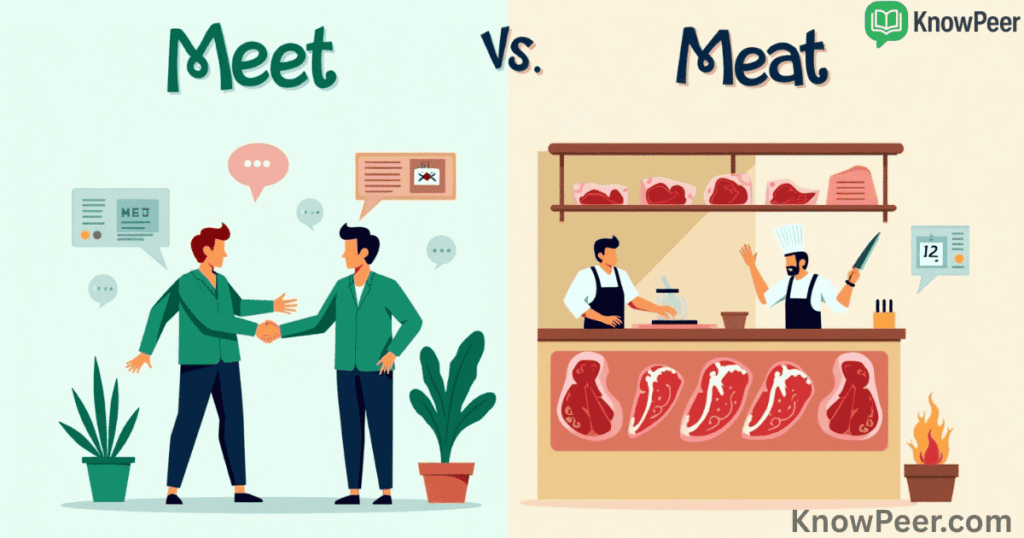
The word “meet” is most often used as a verb, and it describes the action of coming together with someone or something. It is one of the most commonly used words in both casual and professional English. For example, you might say, “Let’s meet after work,” or “I met my teacher yesterday.” In both examples, “meet” shows a connection or encounter between people. You can also use “meet” when talking about achieving goals or fulfilling responsibilities, such as “We need to meet the deadline” or “The solution meets the customer’s needs.”
In more formal or event-based settings, “meet” can sometimes be used as a noun. An example is, “The regional track meet was held last weekend.” Here, “meet” refers to a gathering or event, usually sports-related. Although the noun form is less common, it is still correct and useful in the right context.
Whether used as a verb or noun, the meaning of “meet” always includes some idea of coming together, fulfilling something, or connecting. Its flexibility allows it to appear in many types of sentences. Using it correctly depends on identifying if you’re talking about an action or an event. Understanding this will help avoid confusion.
Meat and Meet in Idioms and Expressions
English has many idioms that use these words. One example is “the meat and potatoes” of something. This means the basic, most important part. For example, “Let’s skip the small talk and get to the meat and potatoes of the meeting.” Another is “meat of the matter,” which also means the main point.
For “meet,” a common expression is “Nice to meet you.” This is used when you are introduced to someone for the first time. Another one is “meet halfway,” which means to compromise. For instance, “We couldn’t agree on the price, so we met halfway.” These phrases make the language richer and show how these words function in real speech.
Which One Is More Common Online and in Everyday Use?
If we check Google Trends, we’ll see that “meet” is used more often than “meat” online. That’s because it applies to many digital situations. People often schedule online meetings, job interviews, and social events. The word “meet” shows up in those cases.
But that doesn’t mean “meat” isn’t common. It appears a lot in food blogs, restaurant menus, and cooking shows. It also shows up when people talk about diet or health. So while “meet” might be more flexible in terms of usage, “meat” has a strong presence in food and nutrition spaces.
Common Mistakes Learners Make With Meet and Meat
One of the most common mistakes is using “meat” instead of “meet,” or the other way around, when writing. For example, someone might write, “I want to meat you” instead of “I want to meet you.” This is a spelling mistake, and it changes the meaning completely Meet vs Meat. It can also lead to awkward or funny situations.
Learners also sometimes use “meat” as a verb, which is incorrect. There is no verb form of “meat.” To help remember the difference, here’s a simple trick: “Eat has ‘a’ like meat”, and “Greet has ‘e’ like meet”. This helps you connect the right word with the right context.
Homophones Like Meet and Meat You Should Know
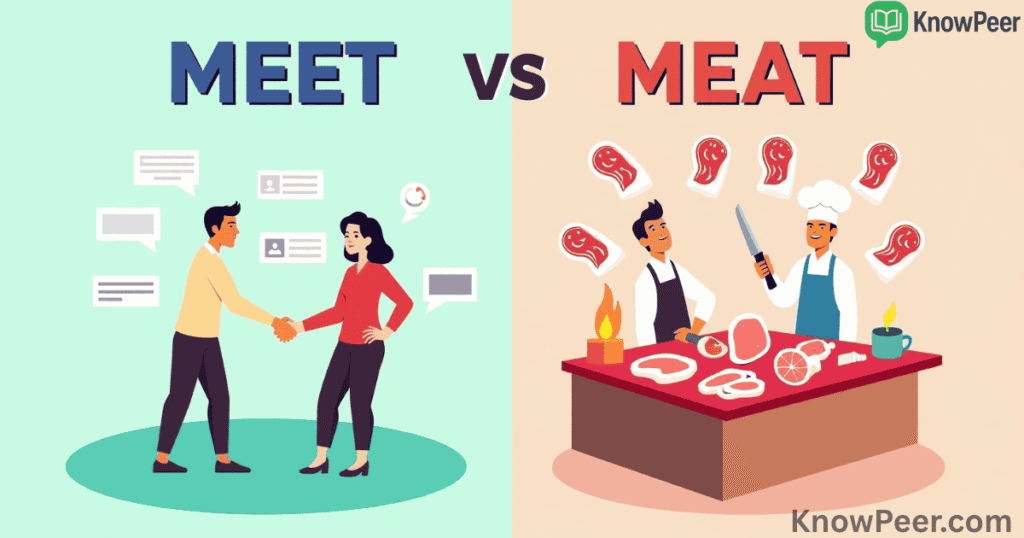
There are many other homophones in English that cause similar confusion. Words like “flour” and “flower,” “bare” and “bear,” or “pair” and “pear” are perfect examples. These pairs sound the same but have different meanings and spellings.
Here is a quick list of common homophones:
| Word 1 | Word 2 | Meaning 1 | Meaning 2 |
| Flour | Flower | Baking ingredient | Part of a plant |
| Bare | Bear | Naked or empty | Animal or carry |
| Pair | Pear | Two of something | A type of fruit |
Understanding homophones helps improve both your listening and writing skills. It also helps avoid mistakes that change the meaning of your sentence.
Quick Recap: Choosing the Right Word Every Time
Let’s quickly go over what we’ve learned. The word “meet” is usually a verb and means to come together, fulfill, or face something. It can also be a noun in special cases. The word “meat” is always a noun and refers to animal flesh used as food or the important part of something.
Even though they sound the same, they are completely different in usage and meaning. The key to using them correctly is to focus on the context. Reading and listening more in English will also help you recognize the correct word faster.
Final Thoughts
You might think that mixing up small words like “meet vs meat” is not a big deal. But in English, even small mistakes can change the meaning of your message. Whether you’re writing a business email or talking with friends, using the right word shows that you understand the language.
Improving your vocabulary, learning homophones, and paying attention to context are easy ways to grow your English skills. So next time you see or hear “meet” or “meat,” you’ll know exactly which one is right.
